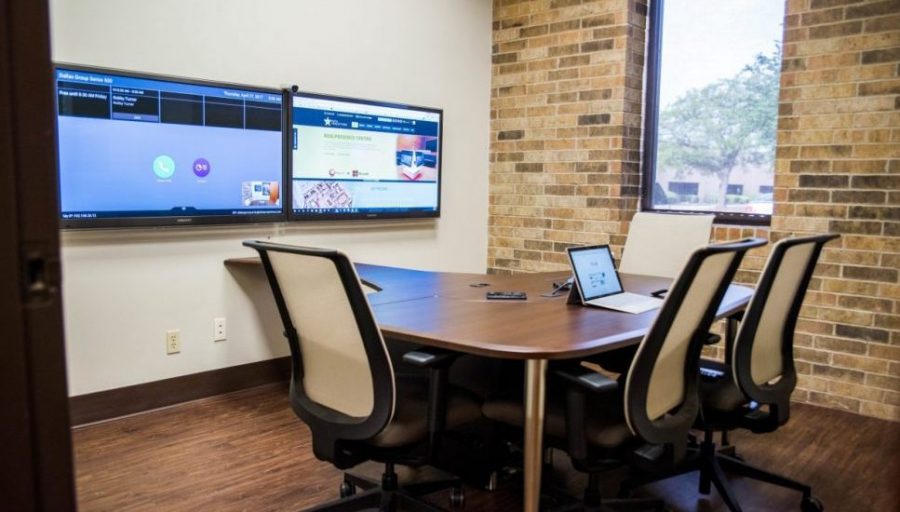Why AV Should Be Considered for Every Distance Learning Lab
Distance learning has been the subject of much research, as technology is changing the way educators teach. Some of that research has helped established best practices for distance education, and AV is a major part of it. According to Hanover Research, “two-way technology-based communication is now an essential feature of distance education delivery,” which means your distance learning lab must have the ability to link students and educators remotely. Hanover Research also recommends distance learning labs provide opportunities for real-time communications. In short, the best distance learning practices now rely on AV solutions to deliver engaging coursework.The Most Effective AV Solutions for Distance Learning
There is no one optimal setup for a distance learning lab. Every organization must consider their student population before moving forward on a solution. How many students or trainees will occupy the room at once? What types of lesson materials will be delivered? Will there ever be an instructor in the room with the students, or will everything be done remotely? These are the kind of questions that an AV integrator will explore before designing a solution, as a reputable integrator will tailor the system to their client’s needs. That said, what are some common distance learning lab setups and the AV components they are likely to include?1. Lecture-style setup – This is the approach most familiar to students and teachers, with the students seated in rows on one side, and a set of digital displays on the opposite wall. This setup is easy to execute, as long as the right technology is in place and positioned properly.
In a lecture-style distance learning lab, high resolution digital displays, a video conferencing codec, a camera and connectivity options are essential. The displays and video conferencing codec are what facilitate the two-way communication, and a 360-degree camera is recommended to frame and track students that are speaking or asking a question. Video conferencing codecs include hard or soft codecs, and the choice comes down to cost, comfort and functionality. Hard codecs offer excellent call quality and unmatched reliability, while soft codecs are inexpensive, easy to use and widely compatible with other video conferencing solutions.
In smaller distance learning labs, microphones and speakers may not be necessary, but even in a typical classroom, additional microphones will improve clarity on the instructor’s end. An integrator can map out the room’s acoustics to determine how to best position microphones and speakers, and how to get superior audio quality.
The only concern with lecture-style distance learning labs is that students who are sitting far away from the front may have trouble seeing what’s on the display or hearing the instructor. An integrator will take this into account when designing a solution.
2. U-style setup – The U-style approach is designed to get students closer to the instructor. It’s a popular option for traditional training sessions, but it can also work well in a distance learning lab. A major issue for virtual learning rooms is whether everyone can hear and see the instructor. A U-style setup does a good job of keeping the distance between the instructor and every student roughly equal, so it’s easier to control video and audio quality for everyone.
A U-style setup can work with one or more digital displays placed at the top of the U, though consider a solution like the Poly Centro, which places the display at the center of the room. With this technology, students can be seated around the instructor, who can see and communicate with everyone at once, and at close range.
An interactive display is also a wise addition to this setup, especially if the room is small enough that the instructor can see what students are doing at the display. An interactive display can be used to confirm knowledge, introduce visual aids and facilitate collaborative exercises between students.
3. The pod setup – The above setups keep the students together in a single group, with a single instructor. A pod setup changes this up, by breaking students into smaller groups that each have access to a display with video conferencing capabilities. It’s only practical for large distance learning labs, but it’s highly effective for encouraging active learning among students. Smaller groups mean more participation, and that helps with retaining information.
To make the pod setup work, a distance learning lab will need several instruction areas, each organized with a digital display and video conferencing codec. Audio enhancement is not usually needed, as students should be situated close to the instructor. Collaborative lessons are effective with a pod approach, so consider bringing in interactive displays or at least another display that can be used to gather research or produce examples.
Distance learning labs are already a fixture in education and business, and that’s probably not going to change anytime soon. With so many AV technologies appropriate for a distance learning lab, there is an ideal solution available for a successful learning environment.


